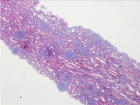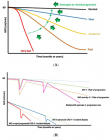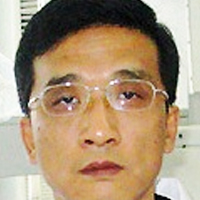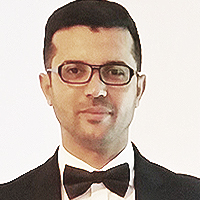Abstract
Research Article
An Individual Rehabilitation and/or Habilitation Program for Children with Disabilities (IPRH)
Shapovalov KA*, Shapovalova LA, Knyazeva NG, Yu PG, Toropova VS, Sannikova LА and Mezentseva AS
Published: 23 January, 2024 | Volume 7 - Issue 1 | Pages: 007-012
Introduction: The individual program of rehabilitation and (or) habilitation of children with disabilities (IPRH) is mandatory for execution by the relevant state authorities, local self-government bodies, as well as organizations regardless of organizational-legal forms and forms of ownership.
Objective: To conduct a pilot analysis of the implementation of the IPRH contingent of patients of children with disabilities in an urban children’s clinic.
Patients and methods: There were 366 reports on the implementation of measures provided for by an IPRH for a disabled person (disabled child) of 222 disabled. The organization of the study was in the nature of a continuous sample. The criterion for the inclusion of patients in it was the passage of an IPRH in a disabled child within a specified time frame. The following techniques were used: grouping, absolute and relative values, average values, detailing, and generalization. The threshold error probability for statistically significant differences was set at a level of 0.05.
Results: The structure of the results of the control of the performance of IPRH in 222 disabled children according to the classes of diseases that caused the onset of disability (ICD) was as follows 1) G00-G99 - 35.47 ± 3.13%; 2) Q00-Q99 - 23.50 ± 2.77%; 3) 11.11 ± 2.05%; 4) C00-D48 - 10.25 ± 1.98%; 5) H60-H95 - 7.26 ± 1.67%; 6) M00-M99 - 2.99 ± 1.11%; 7-8) H00-H59 and P00-P96 - 2.14 ± 0.95%; 9-10) K00-K93 and S00-T98 - 1.29 ± 0.74% each; 11-12) I00-I99 and N00-N99 - 0.85 ± 0.60% each; 13-14) J00-J99 and L00-L99 - 0.43 ± 0.42% each.
Conclusion: 1. In the structure of IPRH in 222 disabled children, according to the classes of diseases that caused disability (ICD), the following prevailed: 1) VI Diseases of the nervous system G00-G99 – 35.47%; 2) XVII Congenital anomalies, chromosomal disorders Q00-Q99 - 23.50%; 3) IV Diseases of the endocrine system, nutritional disorders, and metabolic disorders E00-E90 – 11.11%; 4) II Neoplasms C00-D48 - 10.25%; 5) VIII Diseases of the ear and mastoid process H60-H95 - 7.26%; 6) XIII Diseases of the musculoskeletal system and connective tissue M00-M99 - 2.99%; 7-8) VIII Diseases of the ear and mastoid process H60-H95 and VII Diseases of the eye and its adnexa H00-H59 - 2.14% each.
2. The effectiveness of medical rehabilitation of disabled children was as follows: 1) Improvement - 23.26%; 2) Stabilization - 74.88%; 3) Deterioration - 1.86%. Dynamic observation was carried out on 94.26% of disabled children, drug therapy - 77.32%, non-drug therapy - 66.93%, and other types of medical rehabilitation were received by 14.48% of patients. Reconstructive operations were performed on 11.26% of disabled children.
3. Prosthetics and orthotics were performed on 38.74% of disabled children. 32.43% of disabled children in need received sanatorium treatment, and 30.18% are currently in line to receive a voucher. For various reasons, 24.32% refused this type of rehabilitation; 3.60% of patients had contraindications at the time the voucher was provided.
4. The obtained research results become the initial everyday statistical tool for objectifying the process of rehabilitation of patients and determining the strength and means of a medical institution to monitor and successfully implement an individual rehabilitation/habilitation program for a disabled person.
Read Full Article HTML DOI: 10.29328/journal.japch.1001062 Cite this Article Read Full Article PDF
Keywords:
Individual program of rehabilitation and (or) habilitation of children with disabilities (IPRH); Classes of diseases; City children’s polyclinic
References
- Individual rehabilitation program: good intentions and reality. https://perspektiva-inva.ru/protec-rights/articles/832-vw-832
- Medico-social expertise https://www.invalidnost.com/index/kontroliruetsja_li_dejatelnost_uchrezhdenij_mediko_socialnoj_ehkspertizy/0-176
- Shapovalov KA, Shapovalova PK. The legal basis of medical-social expertise: a training manual. Syktyvkar, Komi State Pedagogical Institute, Syktyvkar Higher Pedagogical College №1 after IA. Kuratov 2000; 1-47.
- Shapovalov KA, Shapovalova PK. The working program of the discipline «Legal bases of medical-social expertise for the specialty 0202 Law and organization of social security. Syktyvkar, Komi State Pedagogical Institute, Syktyvkar Higher Pedagogical College №1 after I.A. Kuratov 2000:1-21.
- Shapovalov KA, Shapovalova LA, Gorbitskaya MS, Semyannikova NA, Lapshina YuV. Disabled children. Formation of the standards of primary and general disability, the main violations in the state of health of children with disabilities of a contingent of patients of the city children's polyclinic of the regional center of the subarctic territory. Pediatric Bulletin of the South Ural. 2017; (2):81-87.
- Individual program of rehabilitation (habilitation) of a disabled person. http://www.mse36.ru/individualnaya-programma-reabilitacii-abilitacii-invalida
- Shapovalov KA, Shapovalova PK. Disability and the individual program of rehabilitation of the disabled person: lecture. Syktyvkar, Komi State Pedagogical Institute, Syktyvkar Higher Pedagogical College №1 after IA. Kuratov 2000; 1-4.
- Individual rehabilitation program (IRP). https://www.med-magazin.ru/about/information/individualnaya_programa_reabilitatsii_IPR/
- What is an individual rehabilitation program? https://f-sma.ru/all-sma/ipra/
- Individual rehabilitation program for a disabled child. http://dou22.rybadm.ru/DswMedia/pasp_in.pdf
- Shapovalov KA, Shapovalova PK. The social integration of the disabled: lecture. Syktyvkar, Komi State Pedagogical Institute, Syktyvkar Higher Pedagogical College №1 after I.A. Kuratov. 2000; 1-6.
- Shapovalov K, Shapovalova L, Yastrebtseva T, Gusarova S, Bairova E. Disabled children. Standards of primary, general disability, major violations in health status and leading disability of disabled children in city children's polyclinic of regional center of subarctic territory. Pediatrics. Eastern Europe. 2017; 5(3):254-269.
- Federal Law of 24.11.1995 N 181-ФЗ (as amended on 07.29.2018) "On the social protection of persons with disabilities in the Russian Federation".
- Shapovalov KA, Shapovalova PK. Public service and institutions of medical and social expertise: lecture. Syktyvkar, Komi State Pedagogical Institute, Syktyvkar Higher Pedagogical College №1 after IA. Kuratov. 2000; 1-10.
- Shapovalov KA, Shapovalova PK. Classification and criteria used for the carrying out of medical-social expertise: lecture. Syktyvkar, Komi State Pedagogical Institute, Syktyvkar Higher Pedagogical College №1 after IA. Kuratov 2000; 1-24.
- Shapovalov KA, Shapovalova LA, Zaboeva MV, Kalinina TA, Toropova OE. Features of the formation of disability among contingent of the city children`s polyclinic of the regional center of the subarctic territory. Yakut Medical Journal. 2018; (1):58-62.
- Shapovalov KA, Shapovalova LA. P209 Control over execution of individual program of rehabilitation and (or) habilitation of children with disabilities. Experience of city children’s clinic of regional centre of subarctic territory. Archives of Disease in Childhood the Journal of the Royal College of Paediatrics and Child Health: 8th Europaediatrics Congress jointly held with The 13th National Congress of Romanian Pediatrics Society 7-10 June 2017, Palace of Parliament, Bucharest, Romania. Paediatrics building bridges across Europe .2017; 102(Suppl 2):A114-A115. DOI: 10.1136/archdischild-2017-313273.297.
- Shapovalov KA, Shapovalova LA. P208 Standard of primary disability for city children’s clinic of regional centre of subarctic territory. Archives of Disease in Childhood the Journal of the Royal College of Paediatrics and Child Health: 8th Europaediatrics Congress jointly held with The 13th National Congress of Romanian Pediatrics Society 7-10 June 2017, Palace of Parliament, Bucharest, Romania. Paediatrics building bridges across Europe. 2017; 102(Suppl 2): A114. DOI: 10.1136/archdischild-2017-313273.296 URL: http://adc.bmj.com/content/102/Suppl_2/A114.1
- Puzin SN, Memetov SS, Shurgaya MA, Baleka LYu, Kuznetsova EA, Muteva TA. Aspects of rehabilitation and habilitation of disabiled persons in modern times. Medical and Social Expert Evaluation and Rehabilitation, Russian Journal. 2016; 19(1): 4-7. DOI: 10.18821/1560-9537-2016-19-1-4-7.
- Nikiforova TYu, Gulin AV. Methodology of forming individual program of sociocultural rehabilitation of invalids. Vestnik TGU. 2012; 17(1):318-320.
- Shapovalov КА, Shapovalova LA, Knyazeva NG, Toropova VS, Sannikova LA, Mezentseva AS, Pokhodyaeva GYu. Analysis of the implementation of the individual program of rehabilitation and/or habilitation of children with disabilities (IPRH) of the city children's polyclinic of the regional center of the subarctic territory. Collection of works of the XXI Congress of Pediatricians of Russia with international participation “Actual problems of pediatrics”. Moscow, February 15-17, 2019. Moscow: Union of Pediatricians of Russia 273. https://www.pediatr-russia.ru/information/kongressy-i-sezdy-pediatrov/2019/tezisi2019.pdf
- Shapovalov KA. Analiz raboty metodicheskogo kabineta GBUZ RK. Syktyvkar Children's Clinic. №3. 2016-2018gg. Syktyvkar: SBAH RK «SChCl №3» 2019:50-61.
- Ziyazov RA, Chernikova TA. Individual program of rehabilitation and habilitation of disabled people as the most important tool of their rehabilitation. Colloquium-journal. 2020; 34(86):4-6.
- Evseeva OE, Grachikov AA, Evseev EP. On the experience of work on individual program of rehabilitation and habilitation of disabled people and children in the field of physical culture and sports. Uchenye zapiski universiteta imeni P.F. Lesgafta. 2017; (7):67-74.
- Shapovalov K, Shapovalova L, Pokhodyaeva G, Knyazeva N, Toropova V, Sannikova L, Mezentseva A. P313 Individual program of rehabilitation and/or habilitation of disabled children (iprh). Results of its execution in the city children’s clinic. Archives of Disease in Childhood. Faculty of Paediatrics of the Royal Colledge of Physicians of Ireland. 9th Europaediatrics Congress. 13-15 June, Dublin, Ireland. 2019; 104(Suppl3):A282-283. DOI: 10.1136/archdischild-2019-epa.662
- Shapovalov KA, Shapovalova LA, Knyazeva NG, Pokhodyaeva GYu, Toropova VS, Sannikova LА, Mezentseva AS. The results of the implementation of the individual program of rehabilitation and (or) habilitation of children with disabilities (IPRH) in the city children's clinic. Geneva: World Health Organization (Pubrights) 2021 May 12:1-24.
- Shapovalov KA. Analysis of the work of the methodical cabinet of the GBUZ RK “Syktyvkar Children's Polyclinic №3” in 2019-2021. Syktyvkar: SBAH RK "SСhCl №3", 2022:1-175.
- Shapovalov КА, Shapovalovа LA, Katorkin VI, Zaboeva MV, Arzubova IN. Forecast of the structure of diseases of the disabled contingent of the city children's polyclinic. Forcipe. Materials of the VI National Congress with international participation "Healthy children - the future of the country." June 1-3, 2022 St. Petersburg. 2022; 5(Supl.2): 552-554. https://gpmu.org/userfiles/file/journals/Forcipe/2022_%D0%A2ezisy%20zdor%20deti_Forcipe_s2.pdf
- Shapovalov KA, Shapovalova LA, Katorkin VI, Zaboeva MV, Arzubova IN. Prognostic value of long-term monitoring of children's disability to determine the forces and means of rehabilitation measures of the city children's polyclinic of the regional center of a subarctic territory with low population density. Pediatric Bulletin of the South Ural. 2023; (1): 12–28. DOI: 10.34710/Chel.2023.22.98.002.
- Shapovalov KA, Shapovalova LA, Zaboeva MV, Chicherova OP, Krikunenko NS. Medical Examinations of Children and Adolescents to Fulfill the Sports Standards of the “Ready for Labor and Defense” Complex. J Adv Pediatr Child Health. 2023; 6:039-045. DOI: 10.29328/journal.japch.1001059.
Figures:
Similar Articles
-
Pediatrics of disasters in the structure of professional training of pediatricians of the city children’s polyclinic to work in emergencies and terrorist acts: View from RussiaShapovalov KA*,Shapovalova LA,Slutsky SI,Karakozova NG,Katorkin VI,Chugaev AI. Pediatrics of disasters in the structure of professional training of pediatricians of the city children’s polyclinic to work in emergencies and terrorist acts: View from Russia. . 2022 doi: 10.29328/journal.japch.1001045; 5: 004-014
-
An Individual Rehabilitation and/or Habilitation Program for Children with Disabilities (IPRH)Shapovalov KA*, Shapovalova LA, Knyazeva NG, Yu PG, Toropova VS, Sannikova LА, Mezentseva AS. An Individual Rehabilitation and/or Habilitation Program for Children with Disabilities (IPRH). . 2024 doi: 10.29328/journal.japch.1001062; 7: 007-012
Recently Viewed
-
Non-surgical Treatment of Verrucous Hyperplasia on Amputation Stump: A Case Report and Literature ReviewSajeda Alnabelsi*, Reem Hasan, Hussein Abdallah, Suzan Qattini. Non-surgical Treatment of Verrucous Hyperplasia on Amputation Stump: A Case Report and Literature Review. Ann Dermatol Res. 2024: doi: 10.29328/journal.adr.1001034; 8: 015-017
-
Outpatient operative hysteroscopy: evaluation of patient satisfaction and acceptanceClare Margaret Crowley*,Noelle Gill,Minna Geisler. Outpatient operative hysteroscopy: evaluation of patient satisfaction and acceptance. Clin J Obstet Gynecol. 2022: doi: 10.29328/journal.cjog.1001098; 5: 005-008
-
Predictors of positive treatment response to PTNS in women with overactive bladderSuneetha Rachaneni*,Doyo Enki,Megan Welstand,Thomasin Heggie,Anupreet Dua. Predictors of positive treatment response to PTNS in women with overactive bladder. Clin J Obstet Gynecol. 2022: doi: 10.29328/journal.cjog.1001097; 5: 001-004
-
Prediction of neonatal and maternal index based on development and population indicators: a global ecological studySedigheh Abdollahpour,Hamid Heidarian Miri,Talat Khadivzadeh*. Prediction of neonatal and maternal index based on development and population indicators: a global ecological study. Clin J Obstet Gynecol. 2021: doi: 10.29328/journal.cjog.1001096; 4: 101-105
-
A Genetic study in assisted reproduction and the risk of congenital anomaliesKaparelioti Chrysoula,Koniari Eleni*,Efthymiou Vasiliki,Loutradis Dimitrios,Chrousos George,Fryssira Eleni. A Genetic study in assisted reproduction and the risk of congenital anomalies. Clin J Obstet Gynecol. 2021: doi: 10.29328/journal.cjog.1001095; 4: 096-100
Most Viewed
-
Evaluation of Biostimulants Based on Recovered Protein Hydrolysates from Animal By-products as Plant Growth EnhancersH Pérez-Aguilar*, M Lacruz-Asaro, F Arán-Ais. Evaluation of Biostimulants Based on Recovered Protein Hydrolysates from Animal By-products as Plant Growth Enhancers. J Plant Sci Phytopathol. 2023 doi: 10.29328/journal.jpsp.1001104; 7: 042-047
-
Sinonasal Myxoma Extending into the Orbit in a 4-Year Old: A Case PresentationJulian A Purrinos*, Ramzi Younis. Sinonasal Myxoma Extending into the Orbit in a 4-Year Old: A Case Presentation. Arch Case Rep. 2024 doi: 10.29328/journal.acr.1001099; 8: 075-077
-
Feasibility study of magnetic sensing for detecting single-neuron action potentialsDenis Tonini,Kai Wu,Renata Saha,Jian-Ping Wang*. Feasibility study of magnetic sensing for detecting single-neuron action potentials. Ann Biomed Sci Eng. 2022 doi: 10.29328/journal.abse.1001018; 6: 019-029
-
Pediatric Dysgerminoma: Unveiling a Rare Ovarian TumorFaten Limaiem*, Khalil Saffar, Ahmed Halouani. Pediatric Dysgerminoma: Unveiling a Rare Ovarian Tumor. Arch Case Rep. 2024 doi: 10.29328/journal.acr.1001087; 8: 010-013
-
Physical activity can change the physiological and psychological circumstances during COVID-19 pandemic: A narrative reviewKhashayar Maroufi*. Physical activity can change the physiological and psychological circumstances during COVID-19 pandemic: A narrative review. J Sports Med Ther. 2021 doi: 10.29328/journal.jsmt.1001051; 6: 001-007

HSPI: We're glad you're here. Please click "create a new Query" if you are a new visitor to our website and need further information from us.
If you are already a member of our network and need to keep track of any developments regarding a question you have already submitted, click "take me to my Query."

















































































































































